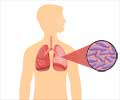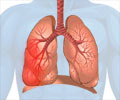Diagnosis of Pleural Effusion
Thoracentesis may be performed for diagnosis or therapy. The classical pattern of examination includes inspection of the respiratory system, palpation, percussion (tapping) and auscultation.
Diagnosis of
- Radiologic Examination is of great aid in the diagnosis of pleural effusion. X-rays taken in the ‘posteroanterior view’ have to be supplemented with a lateral decubitus view (obtained with the patient lying on the side of the effusion). Chest ultrasound and CT scan also help the process of diagnosis.
- Thoracentesis and Pleural Fluid Analysis
Thoracentesis may be performed for diagnosis or therapy. A long thin needle is injected into the pleural space to remove fluid that is sent for testing to confirm the diagnosis. This is also used for treatment. As a rule, newly discovered effusions should be tapped. A number of conditions act as relative contraindications for tapping. These include bleeding diathesis, anticoagulation, a small volume of fluid, mechanical ventilation, and a low benefit-to-risk ratio.
While diagnostic tapping takes 30 to 50 ml of pleural fluid for analysis, therapeutic tapping takes a larger amount (no more than 1000 to 1500 mL at one time).
- Chemical analysis helps to differentiate a transudate from an exudate. Exudates have higher protein concentrations than transudates. LDH (lactate dehydrogenase) level also act as a distinguishing factor between the two. Analysis of cell count, culture can reveal infections and malignancies.
Light's criteria for exudates–any of following:
Pleural fluid/serum protein ratio > 0.5
Pleural fluid/serum
Pleural fluid LDH >2⁄3 the normal upper limit for serum
- Biopsy may be indicated in selective cases.
- Further examination may be required to diagnose the underlying cause.
Alternate diagnoses (Differential diagnoses) include hemothorax (blood collection in the cavity), pneumothorax (presence of air) and empyema (collection of pus).








